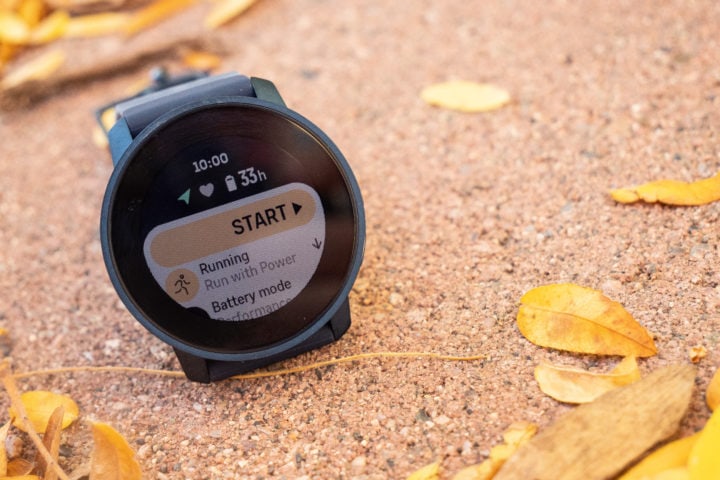
Suunto has announced their new Suunto 9 Peak Pro multisport watch, which takes the existing Suunto 9 Peak, and makes it a bit more ‘Pro’ through a variety of hardware and software updates. One could argue it’s actually the biggest internal hardware update that any Suunto watch has received in years, and then add atop that a revamped user interface and new sports features like wrist-based running power. In fact, Suunto themselves notes that it’s the “most powerful Suunto ever” with its new processor and MCU (microcontroller), all of which Suunto says should make it a bit more future-proof.
However, the watch isn’t the only news from the Suunto camp. In addition, they’re expanding their 3rd party apps platform to allow more data connectivity from the watches, including being able to directly connect to devices like the CORE body temp sensor and others. As part of these larger updates, they’re releasing a new Visual Studio Code extension so that companies can develop apps for the Suunto watches more efficiently than before.
Now, this post isn’t a full review, mainly because the watch isn’t coming out till later in the month, so for now it’s nearly beta software (albeit nearly final). Once it does start shipping, I’ll release a full in-depth review. Till then, here’s something to tide you over.
What’s New:
From the outside of the device, the new Suunto 9 Peak Pro doesn’t look much different. Though technically, it’s slightly different – a mere 0.2mm thicker, which of course you wouldn’t notice in real life. Instead, it’s all about the internal hardware revamps, and software features updates. Here’s a quick hit list of what’s changed:
– New more powerful processor, but also with new power-efficient MCU
– New LifeQ Optical HR sensor module, slightly decreased battery consumption
– New All-Systems GNSS Chipset (not multi-band, but GPS/QZSS/Galileo/Beidou/GLONASS via Sony)
– Claimed increased GPS accuracy by allowing up to 4 concurrent systems and 32 satellites at once
– Revamped user interface, with faster responsiveness
– Added new “Mermaid Dive” mode, for tracking shallow free-diving to 10 meters
– Added watch widget customization
– Added wrist-based running power
– Added normalized graded pace (NGP) in activity logs
– Adding Strava Live Segments in (date TBD)
– Added more SuuntoPlus guides (mini-apps)
– Increased durability to MIL-STD-810 standard
– Increased battery life by 50% to 40 hours of GPS time in high fidelity mode, 70 hours in endurance mode
– Maintained existing fast-charging (10 mins charging = 10 hours training)
– Price is 499EUR for the stainless steel, and 629EUR for the titanium
So let’s briefly dive into some of these features, and no better one than the actual sorta-diving one, Mermaid Mode. Suunto says this is something popular in China, where people want to track repeated shallow dives. This mode will show depth down to 10 meters in depth, but will not show depth beyond that. The reason for the limit was finding a sensor that was accurate both above and below water. While Suunto has extensive experience with dive watches, they noted that finding a specific combo sensor that worked well above and below water is tricky, saying that most combo sensors that work well deeper, tend to be less awesome above water for elevation/altitude (e.g. for the rest of your training). This was the middle ground. Here’s how things will look on the watch:
Afterward, you’ll see this data in the Suunto app. I’ve got some warmer/clearer water over the next week to test this out a bit more, so I’ll include that in the full in-depth review.
Next, is the revamped user interface. If you come from an existing Suunto watch, you’ll find it’s pretty easy to get used to and will feel quite familiar. Suunto says they’ve put effort into the overlays and coloring, making things pop a bit more, and be more clear. One of the big complaints I had about many of the recent Suunto watches is that the display simply isn’t great. The thing is, the actual display itself wasn’t bad per se, but rather, Suunto’s previous selection of fonts and UI elements made it feel worse than it needed to be. The new UI aims to fix that, in combination with the faster processor so that things don’t feel sluggish.
And indeed, it definitely feels better. The UI is certainly more clear, and also certainly faster. It still feels like a bit of a dim watch though (when the backlight isn’t on), and the display-to-bezel ratio hasn’t changed any here either. But overall it’s a good improvement.
That gets us to the big ticket item for most people, which is the new wrist-based running power support. Suunto is now joining the fray, which includes Garmin also announcing wrist-based running power last week. With previous entrants Apple, COROS, and Polar, pretty much rounding out the most common GPS sports watches (save Wahoo, which does support the accessory power). As with most wrist-based running power options, you simply need to run to see your running power.
Suunto continues to support the Stryd running power pod, and if you pair a Stryd pod, that data will override the Suunto wrist-based data. All other power-driven functions remain the same as before, it’s simply now that you don’t need a Stryd pod.
Now for the usual preface, there is no standard (or scientific agreement) for running power, and each company more or less aligns to a few different algorithms. Some companies simply choose to align to what Stryd has done (COROS/Apple), while others select different algorithms (Polar/Garmin). Suunto aimed for the Stryd camp, and thus says their data should align there.
My wrists have been a wee bit packed with many new watches the last few days, but I did a short test run to see how things handled. This run had the Suunto on one wrist, Garmin on the other, and then a COROS up on the hand (so, it’s not perfect, but I find it’s usually pretty close to ballpark). I had planned to include Stryd, but as I discovered at the start of my run, the Stryd battery had apparently died on the plane. No worries, I’ll update this chart with another run shortly.
As you can see, it’s pretty much where we’d expect, closer to COROS (since COROS generally matches Stryd). The Garmin is higher up, as is usually the case based on the algorithm choices they’ve made.
Still, this is great to see, and I think with all major companies moving towards wrist-based running power, it’ll be interesting to see if we start to see more adoption of running power generally (e.g. from a coaching/etc standpoint). Part of the challenge there though is that with different companies selecting different algorithms, it makes coaching a bit more challenging as the coach has to essentially cater to the specific brand device a user has. Which isn’t something coaches have to do today for cycling power.
Finally, one last thing that’s worthwhile noting is that Suunto is using fully renewable energy for their factory and headquarters, and has calculated the carbon footprint of the watch at 7.5kg (equivalent to driving 44 kilometers). For comparison, the carbon footprint of the Apple Watch Ultra, according to Apple is 56kg. While Garmin has a very pretty website on this topic for lots of initiatives, I can’t seem to find per-product data there.
Suunto Platform Updates:
Next up, we’ve got a slate of updates around the Suunto platform, some of which are development-focused, but all of which have consumer implications/benefits.
The first is a new connectivity option that lets apps pair to specific non-standard devices, such as something like the CORE Body Temp sensor. This allows the app to automatically pair to the nearest device, and then store that data in the app and underlying workout file (exportable in .FIT). There’s also API support as well. The idea here is roughly akin to Garmin’s Connect IQ Data Fields & Apps, in that sensor makers don’t have to get native support or try to get support for an entirely new protocol, they can simply communicate directly via an app on the watch.
That then allows the data to be shown to the user mid-workout as a data field, but also allows saving/writing the data to the files which 3rd party apps can display. That could be apps like TrainingPeaks, but also simply native API connections from the Suunto platform to perhaps the device maker’s own website, which would be able to better understand the added data.
This is all great stuff, but keep in mind there’s still a limit of a single Suunto app per workout. So you wouldn’t be able to combine one of these new Suunto apps with something like one of the Suunto guides that does structured workouts.
Next, they’re releasing a Visual Studio Code Extension, called SuuntoPlus Editor, that will help developers create SuuntoPlus apps faster. Suunto says they’ve been trialing this with about 20 partner companies thus far, and that the feedback has been good. You can see below the code behind the Cooper Test app (SuuntoPlus app).
Next, Suunto will be rolling out Strava Live Segments at some point in the future (previously it was hoped by end of 2022, but sounds like it’ll be longer than that). Segments that are starred will get automatically transferred to the Suunto watch, and you’ll be able to race against both your existing PR and the KOM.
Keep in mind this is the second Strava integration over the last few months, with Suunto also having added in Strava Routes functionality this past summer.
All of these platform changes are good to see, but especially the 3rd party sensor integration option. That gives them much more flexibility to approach partners about adding in sensor support for new products, especially startup companies, without the need for complex integrations.
Wrap-Up:
The Suunto 9 Peak Pro seems to be a bit of a turning point for Suunto. Or at least, it might appear that way. On one hand we’ve got revamped hardware internals, which should make the watch not just more accurate with its higher-end GNSS components, but also simply faster to use with the increased processing power. Meanwhile, on the software side bits like refreshed user interface help considerably, as does running power and the soon-to-arrive features like Strava Live Segments. And finally, the platform changes all indicate Suunto is investing in the business, the platform, and time with their partners.
Platform changes and integrations aren’t typically sexy things. And don’t by themselves sell watches at a running store or online retailer. Instead, they connect the dots for people that may have other products/accessories/platforms, and want a product (watch) that works with those. It’s not every consumer, but individually it’s a lot of consumers with different needs, solved by a lot of different solutions. All of which require good integrations, and it’s good to see Suunto opening that door wider here.
Of course, there’s also the reality that while the internals are refreshed here, the basic overall screen technology and screen size still feels pretty dated (and dim). And launching a $500 GPS endurance sports-focused watch in late 2022 without multi-band GNSS is challenging. This is a watch that I’d assume will sit in the product lineup for at least 1-2 years, and we’re already seeing the tides shifting here very quickly, and by early next year I think we’d be hard-pressed to see any new watch from $300+ not have multiband built-in.
Suunto of course can sidestep some of their hardware shortcomings by increasing to a software cadence that outlines more and more new features. In effect, they can look to companies like Hammerhead (which Suunto actually has a partnership with), as an example of a very high release cadence of new and useful features that draws customers in – all without releasing new hardware. This of course requires more developers and more investment, and likely a bit more cultural shift.
Ultimately though, I’m happy to see Suunto kicking things up a bit here. The last few years have felt a bit stale, but this might be the beginnings of renewed focus for the company, and hopefully increased competitiveness.
With that – thanks for reading!
Found This Post Useful? Support The Site!
Hopefully you found this review/post useful. At the end of the day, I’m an athlete just like you looking for the most detail possible on a new purchase – so my review is written from the standpoint of how I used the device. The reviews generally take a lot of hours to put together, so it’s a fair bit of work (and labor of love). As you probably noticed by looking below, I also take time to answer all the questions posted in the comments – and there’s quite a bit of detail in there as well.
If you're shopping for the Suunto 9 Peak Pro or any other accessory items, please consider using the affiliate links below! As an Amazon Associate I earn from qualifying purchases. It doesn’t cost you anything extra, but your purchases help support this website a lot.
And finally, here’s a handy list of accessories that work well with the Suunto watches. Given the unit pairs with standard Bluetooth Smart sensors, you can use just about anything though. I'd recommend the Garmin bike sensors over the Wahoo ones, merely because the Garmin have two concurrent Bluetooth channels versus one for the Wahoo RPM/SPEED sensors.
And of course – you can always sign-up to be a DCR Supporter! That gets you an ad-free DCR, access to the DCR Quarantine Corner video series packed with behind the scenes tidbits...and it also makes you awesome. And being awesome is what it’s all about!
Thanks for reading! And as always, feel free to post comments or questions in the comments section below, I’ll be happy to try and answer them as quickly as possible. And lastly, if you felt this review was useful – I always appreciate feedback in the comments below. Thanks!




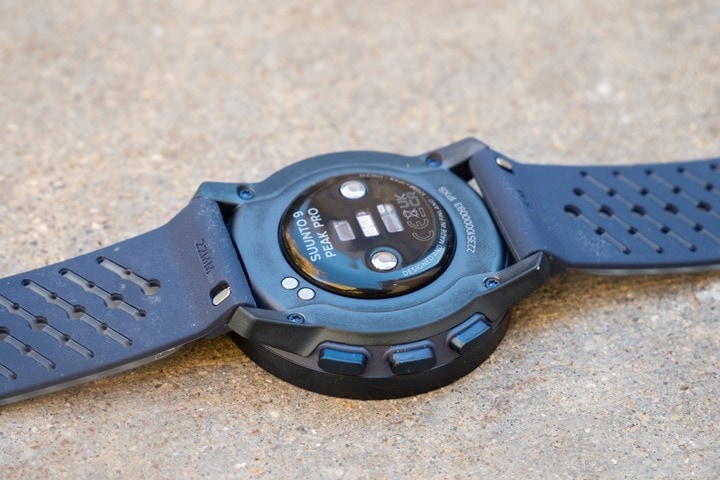
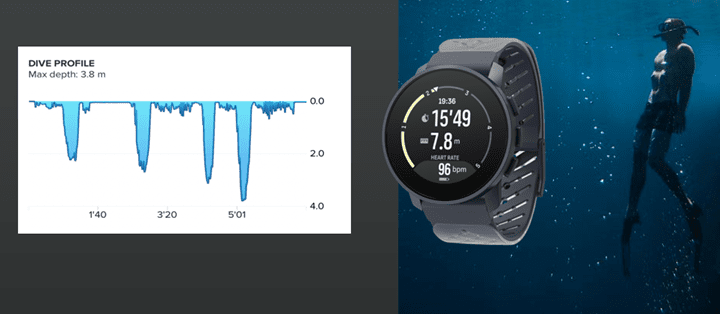

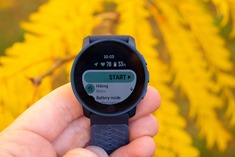
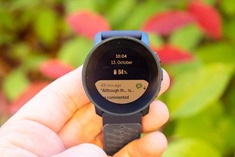
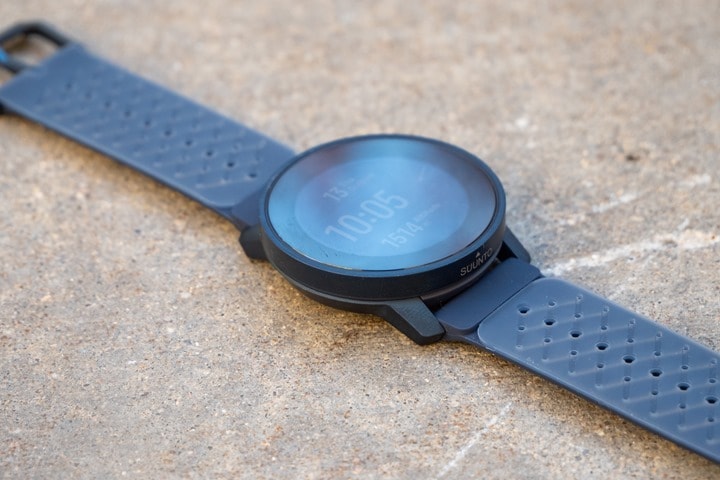




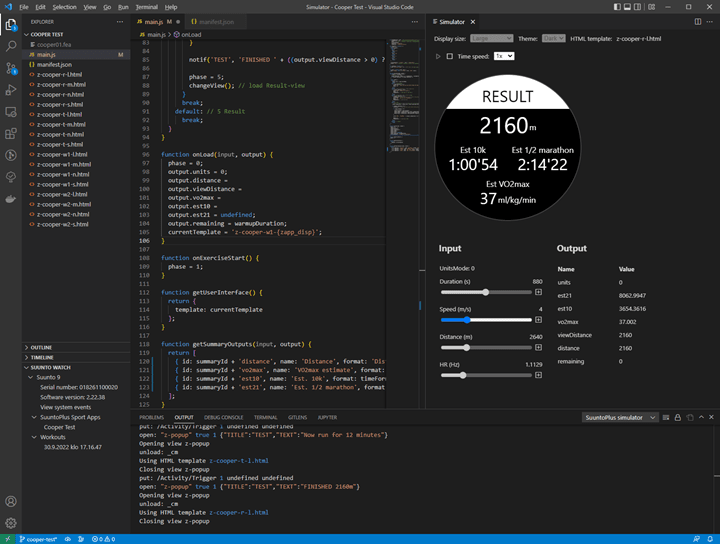


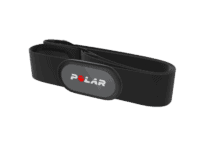
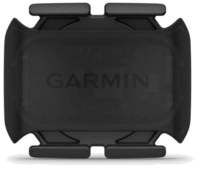
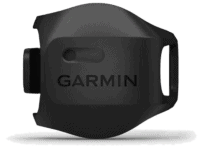
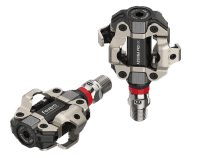
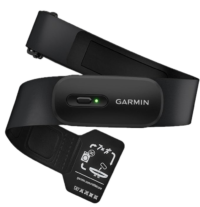

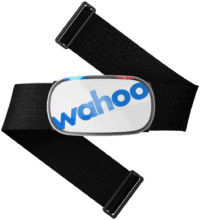





















Ray, will Suunto ever release a watch with mapping? I don’t see why they don’t enable the ability to install OSM.
Not sure. While it’s on the Suunto 7 as pointed out below, that doesn’t entirely match with the core audience that wants it (which is endurance sports folks). I agree, it’s a growing gap at this price point.
“stainless steal” hmmm
Haha…thanks!
Ray, When is the full review be available? Hows the gps handling? On triathlon, open water, etc?
As noted, the product isn’t final yet, so I’ll wait for that first. The slated date for that is Oct 25th, so sometime around then. In that I’ll look at GPS accuracy including openwater swimming.
Suunto will remind you of the Suunto 7 that can show maps in Wear OS (Google Maps and other mapping apps)
Suunto specifically pointed out that the 9 Peak Pro had extra space (RAM) for ‘future developments’. I just checked if i made a note of how much more RAM but i didn’t write it down. Maybe Ray did? If it’s a big increase that that might signal an intention to add maps but I got the impression it wasn’t for maps.
Plus, as Ray points out above, there is a relatively small and low-res display. That isn’t exactly that great for maps.
Yeah, both ROM & RAM were increased, but nothing specific. Realistically I don’t see them adding maps to this watch, the display just wouldn’t do well with it.
It’s the same display at Fenix 5 isn’t it? So yes, relatively small by F7 and Epix standards, but absolutely fine for mapping and I used the F5+ for this regularly.
I was curious about storage (not the same as RAM, don’t confuse the two) on this. While mapping is hard for many reasons, music should be very easy and the CPU probably has hardware decoding built in. I can only assume they won’t do music because “level 1” of music is copying files locally, which almost nobody wants in 2022. “Level 2” is pretty much offline Spotify, which would be hard for Suunto to pull off I’d imagine.
It’ll be interesting to see if they try, the alternative would seem to be gradually decreasing price over time to reflect their place in the market. I’m a little disapointed they’ve not crossed over the dive functionality – they genuinely have market advantage there and it would have been easy. I don’t buy the whole sensor thing – Garmin managed it on their first try.
I keep hearing it’s the same display (occasionally, from interwebs only), but I don’t know how. It just doesn’t look anywhere near as good. I’m not sure if that’s due to font usage, or insets, or whatever, but it simply doesn’t seem to have the same pop.
If I look back at my Fenix 5 review (non-Plus)*, it’s so easy to get good photos of it. I just point any camera of it, and the screen comes out crispy and sharp, seemingly no mater the light. Yet the Suunto just takes a lot more effort, and never quite looks anywhere near the same.
* link to dcrainmaker.com
Suunto’s screens are further away from the lens. I guess it’s because antenna design. Look to the watch from the side and you’ll see the gap is bigger.
Therefore light doesn’t impact from an angle as well as with other brands, so that’s why it has to be directly towards the light for it to be crisp. Otherwise it will look very dark. This is specially noticeable when driving.
I wouldn’t rule out both screens are the same, but how they put them below the lens and how the light falls is what makes a difference.
About memory, I’ve been told RAM is much larger in the Peak Pro, but no mention on ROM.
Surely they could go COROS way like with the APEX Pro, adding internal memory “just in case”, but it doesn’t look like it.
Just to clarify, and I did look on Suunto’s website, this is their latest and greatest watch, the Suunto 9 Peak Pro, does not do on-board music? No integration with Spotify or Amazon or others; not even a basic media player to play .mp3 files that the user could transfer via USB to the watch?
If that is correct, what are they thinking? Or am I in the minority by wanting to listen to bluetooth music without carrying my phone (say, a track running workout, or a gym workout and I don’t want to carry my phone to every piece of gym equipment.)
Thanks
Get a smartwatch or a Garmin. Or any of these:
link to amazon.com
As long as it is suitable as a sports device, I think it is not a priority.
I have never used the music playback feature on any of my watches.
As Ray has pointed out often, for streaming (which is by far the largest market for this) it’s a matter of scale. Unless you have the volumes of Garmin, Google, Apple, companies that do music streaming won’t even sit at the table with you to discuss using their services.
I guess the media player with music saved offline in the watch would be possible. But I am not so sure the market for that is so big at this point.
“Part of the challenge there though is that with different companies selecting different algorithms, it makes coaching a bit more challenging as the coach has to essentially cater to the specific brand device a user has. Which isn’t something coaches have to do today for cycling power.”
But does it. Thinking about cycling, then power efforts are based around (the equally debatable) individual FTP. So doesn’t matter if that person’s FTP is 200w or 300w, nor if the device they read that on is +10% or -10% (so long as it’s consistent), you are doing intervals/efforts at 60%FTP or 120%FTP.
So as long as there’s a run FTP test when you swap platforms, or algorithms get updated then it shouldn’t be more complex for coaches?
Now having said all that, I’m not a run power believer myself. Mainly as I was an early adopter of cycle power and had one of the polar chain magnet approximators. Which was not really all that helpful as it sometimes tracked logically, but sometimes not, and so you never really knew. Same with run power at the moment IMHO, there’s so many externalities that are not being measured and proxied that I’m very skeptical. But equally interested enough and open enough of mind to be engaging in this as it develops.
I think at first glance it shouldn’t, but in reality, it’s tougher. I’ve chatted with a few coaches about it, and they find it hard to know, because it makes the ‘at a glance’ aspect tougher. Meaning, most coaches that have small numbers of athletes can quickly glance at wattages and know whether or not the athlete hit their target based on knowing that athlete. But now they also have to know which device, and if the device type changes (e.g. they go from Suunto to Garmin, or Garmin to Apple), that dorks up historical data and those targets.
But issues will come when the average user, who doesn’t understand how the running power in their watches work, changes brands and doesn’t tell his/her coach.
And the average coach, who doesn’t understand how the running power in their watches work, will start to see so many discrepancies in their athlete’s data. So the coach will end discarding power data as a whole, not trusting it and coming back to pace/HR as always.
Brands should create some kind of standard algorithm if they want running power to be taken seriously.
I understand where people are coming from here, but as a coach, it’s not necessarily the power number (hr) that matters, it is where it lies within the physiology of the athlete.
You still need to ‘test’ the athlete, and try to get the running power equivalent of FTP, or Lactate Threshold HR, and once got, setting the zones accordingly.
If a runner sits at 175 as LT HR and their power is 450 watts on Garmin, you’ll know how to prescribe zone 2 efforts.
I don’t totally understand that. Each athlete will have different power zones which are based on their critical power with the device ecosystem they use. The zones should be defined in TrainingPeaks or whatever. The workouts should be defined in terms of time in zones. The coach should be looking at if the zones in the actual executed workout more-or-less match the prescribed workout. It shouldn’t matter what the absolute numbers are really. That is unique per athlete.
If they can’t see that at a glance then the visualization in TrainingPeaks isn’t good enough.
It sounds like what your coaches are saying is all the athletes they work with have similar stryd zones and they are looking for if they all were around 280w for their repeats or something.
Here is the problem. The lack of a standard makes it hard to change brands. And it undermines trust in the concept because there are roughly 3 different mainstream algorithms.
Stryd has been dominant but Garmin is going to probably overtake the Stryd installed base in a month as they roll out power systematically to their f7 generation watches.
I have been wondering for a while if Garmin’s power conceptually combines what Stryd calls Form Power and Power. Or if they just have totally different models from first principals and the magnitude is just different by about 1/3.
Brian,
Garmin running power is what they call “Propulsive Power”, whereas Stryd calls what they are measuring a “External Power” which is a subset of total “Metabolic Power” and I believe Garmin’s concept as would be described by Stryd as “Mechanical Power”.
Basically, I believe Garmin is attempting to model what a force plate would read when you are running and Stryd is attempting to model how much energy you’re spending with your legs.
Stryd “Form Power” is simply the power for vertical bounce and is part of their total power.
Stryd Power = External Power = Form Power (bounce) + Horizontal Power + Wind Power (on the newer models) + Elevation Power but not Internal Power (swing efforts) or Lateral Power (balance efforts).
And I do not believe that they can be mixed and matched in a coaching environment simply by thinking in terms of %CP. IIUC Garmin’s power numbers would include leg spring effects which will vary quite amount with grade and form and thus whatever scalar is used between the two systems on flat ground would probably be the wrong scalar on inclines.
link to stryd.com
link to geeksonfeet.com
link to garmin.com
Replace what you said about Power, with HR, and you’ll see, that no athlete has the same LT or MHR, and so setting zones is personal and unique to each individual. Same goes with Power. You test, you find the number, and create the zones. It is irrelevant to the coach whether the athlete is 350 with a Garmin, and 500 with stryd. There zones would be worked out as %’s and assessed that way. You just have the athlete using one device, which is what many do anyways, or as some coaches do, you only use stryd.
That is a very interesting explanation and makes Stryd sound rather suspect. I have always understood Stryd as modeling metabolic cost — which should be highly correlated to VO2. But I did not understand the number as being unmoored from modeling the ground impact force.
Garmin is attempting to model the actual impact force then. That is directly analogous to power meters in cycling.
But either way if the concept is valid they should be proportional until conditions cause the models to break down. And there should be a critical power and % of critical power should be legitimate zones that are comparable across systems when they have been calibrated for an athlete.
However even if you were to believe this in principle there is a problem with the until the model breaks down. Those conditions include steep hills, wind, rain, uneven and loose surfaces, mud, any significant use of hands like on knees, poling, and scrambling.
Stryd is quite noticeably affected by ground and reads low on dirt and gravel relative to good pavement. Stryd is also quite sensitive to changes in shoes — at least for the distance calibration but I think it affects all the numbers.
I have used Stryd for years. I rejected the original Garmin implementation as unusable but I am trying out the new natively implemented one — which is much better or at least so much more usable.
Having recently been injured I am suddenly interested in the Garmin L-R balance to monitor recovery which Stryd does not have. So maybe I am giving Garmin a pass because I’m biased by that.
I don’t really think either of these systems is generally as useful as power in cycling. I wouldn’t pace a race even with power from either one and maybe that is because my events tend to be hilly and on trail where they don’t work very well. I do think that power-based interval workouts are superior to HR or RPE alone where the conditions are favorable.
Brian,
“Garmin is attempting to model the actual impact force then. That is directly analogous to power meters in cycling.”
Yes, but that’s not good. Since cycling is inelastic and non-impact the power applied pretty neatly sums the training and recovery loads. Training load and recovery demands are well coupled. But that’s not true for running. The elastic energy component has little to no impact on training load, for example, while the impact force is a large component of recovery demands.
“But I did not understand the number as being unmoored from modeling the ground impact force.”
All the current running power solutions are, because:
“Stryd is quite noticeably affected by ground and reads low on dirt and gravel relative to good pavement.”
They all must assume ground conditions. Only direct force would be able to account well for that.
“But either way if the concept is valid they should be proportional until conditions cause the models to break down. And there should be a critical power and % of critical power should be legitimate zones that are comparable across systems when they have been calibrated for an athlete.”
No. Because, as I explained earlier, they are measuring different things. Stryd believes their CP is based on that subset of the “Total Energy Of Running” which actually correlates with training load and recovery demands. Garmin’s model includes more factors (factors Styrd believes obscure the important bits) and so everytime those other factors change the Garmin model and Stryd model will diverge. Thus their CPs can not be scaled to match.
CP is not an immutable law of nature, there’s no inherent reason that one training system’s concept of CP need match another. I believe biomechanical simplicity of cycling obscures this fact.
Thanks Ray,
That bezel width is just awful. It ruins the watch. Maybe some people won’t care, I wouldn’t buy it for that reason alone.
If you measure from the outer edge of the watch instead of just the screen, the overall bezel of e.g. Garmin Fenix 6/7s or Coros Pace isn’t actually that much smaller. 42mm width for Garmin/Coros, 43mm for the S9P(P), with exactly the same display size, so only 0.5mm extra on each side of the display. Garmin only chose to place a big shiny ring around the glass and printed button labels on it.
Yes it would look nice to have a bezel-less design, but the components need to go somewhere.
will you be doing an Engo eyewear review? Looks interesting :)
I’d love to see Engo review as well. I’m pretty sure it’s not an accident that you write about non-standard sensor support using Core temp sensor as an example but post a picture of the watch next to Engo glasses
Agreed.
Ray you’re teasing us with a pick of the Engo2 sunglasses, when’s the review coming?
Why wait for xyz to review it ???
It is a simple product that does simple things.
You order it, take a look, and if you don’t like it return it and get you money back!
I am expecting mine next week, and i if i am not happy, return it for refund.
No review can surpass your personal experience.
I’ve read some reviews. ” They brag about a good return policy but only because there’s apparently no way to return them.” link to reddit.com If anyone is willing to risk it then use a credit card so you can dispute the charge if they won’t let you return it. Good luck!
Just a quick update after pairing and first impressions:
– below expectations
– price should be half
– you see some tiny numbers close to the nose not the big stuff they demonstrate on their web site.
– numbers are clear even if you use reading glasses in your daily life
– useful for safety reasons in trail running, mtb, riding in buy roads
– useful for pacing during a race if you hate garmin alerts and don’t want to look at your watch every minute.
– quality of construction is average.
– fit is questionable.
You should mention that you’re still talking about the glasses, not the S9PP :)
Hi Ray! Do you have any thoughts or infos about possible update to 9 peak? thks
I hope Suunto will launch in 2023 a 51mm model with superior battery like a Fenix 7x or Vertix 2.
Ray the watch has also snorkel dive mode, not just mermaid.
While I’ll try it out in the next few days, what’s the practical difference?
Mermaid is indoors and snorkeling has gps also. Also snorkeling is perhaps more relevant to larger audience than mermaiding, so thought it would be good to mention in whats new section. (Im beta tester)
Mermaid isn’t indoors it’s just snorkelling without the snorkel. Freediving but less deep. Essentially swimming underwater with fins on.
Well I dont know much about mermaid, except would disagree on the fins part – I believe it has monofin instead of fins. But I suppose it can be both indoors and outdoors, propably more indoors as S9 Peak Pro it is modelled like I said. But whatever, not my cup of tea.
One more clarification; it is of course possible to enable gps also for mermaid in settings, just the default is off, whereas default is on for snorkeling.
A few things that I would appreciate some clarity about:
– Should the Suunto 9 Peak Pro be viewed only as an improvement of the Suunto 9 & 9 Peak?
– Or can it be regarded more as an entirely new stand alone model?
– Would it be worthwhile to upgrade from a Suunto 9 Baro or should I rather wait for the Suunto 10 (whatever they are going to call their new top of the range multisport watch)
I’d say it’d be viewed through the minor update lens. Which is sorta tricky, because I get that internally it’s moderate to major upgrades, but from a consumer standpoint if you have a Suunto 9 Peak already, it’s more incremental than a major sweep of new features.
It might be worthwhile to upgrade from a Suunto 9 Baro though. I don’t have any idea what timing looks like for a Suunto 9 VNext (in theory it’d retain the Suunto 9 branding, though I think that’s starting to get a bit messy).
Would it be fair to assume that the new user interface will be coming to other models like Suunto 5? And the same with the power support?
Still no ANT+ ?
That ship sailed a long, long time ago…
ANT+ is a weird niche standard. I understand why it exists for legacy reasons but I don’t understand why Garmin continues to preference it over Bluetooth when the entire mobile device industry is standardized on BTLE. Bluetooth has a higher, more reliable data rate (which is noticeable when analyzing exercise data for HRV) and audio requires BTLE anyway.
I totally get why the other manufacturers only do Bluetooth when that is a reliable, commodity part and standardized protocol.
“I don’t understand why Garmin continues to preference it over Bluetooth”
I guess it’s because they own it :).
The parts all support both stacks, adding BTLE and Ant+ is a licensing decision only. Garmin enable both, others do not. Since Garmin can’t give themselves preferential licensing, the only conclusion is the others are trying to stiff you, the consumer, to save some money.
BTLE traditionally has been buggy and troublesome, hasn’t supported full features on sensors, and still doesn’t support more than a couple of connections concurrently. It has also suffered with version incompatibilities which led to problems when updating sensors or devices.
Ant+ has generally been stable, always supported full sensor capability (and has private Ant profiles anyway), and has no limit on sensor connections other than available bandwidth.
I don’t consider Ant+ to be legacy at all, it continues to be my preference. The only real world benefit to Bluetooth is data privacy, and that really only impacts pro cyclists who don’t want someone changing their gears on a steep alpine route. Garmin might own it, but the preference towards it is for very good reasons.
Yes, Garmin’s implementation of BTLE has been buggy and that is my point. It or ridiculous. BTLE is the worldwide standard for personal network devices and the development and ubiquitous is tied to the smartphone market.
BTLE has higher data rate, better data integrity (dropped frames in ANT+), and encryption. ANT+ has none of that. It should be a protocol that fades away.
ANT+ has been far more reliable for years than BTLE, at least for me and most people I talk to. Garmin prefers it because of this reliability and it’s not an ever changing protocol like bluetooth. Plus, we still have some devices that can’t use multiple concurrent BTLE signals. An Apple TV is one example but there are plenty others. There are still craptons of older ANT only devices still working and being used. ANT+ : frequency the same, the data rate is the same, coverage same, and much simpler protocol stack. ANT has the simplest protocol with minimum overhead, and it supports more different types of network topologies. My experience is that in many ANT only sensors, the battery life is far longer. This may seem intuitive if it’s a combine btle/ant as it has two signals. Nonetheless, it appears to me that for instance an ANT only footpod lasts sometimes months longer than a BTLE footpod. To me at least, the simpler protocol is noticeable when connecting sensors as generally the ANT sensors pair far faster. I would agree BTLE is catching up but it’s still not king.
Just to clarify ANT+ has a data rate of 12.8kbps.
Bluetooth Low Energy has 4 different possible data rates from 125kbps to 2mbps. The lowest power BTLE is 10x the data rate of ANT+ and the data is encrypted between the peers.
I just find it odd that we hanging on to ANT+. It is insecure and really long in the tooth.
You said before you can see the limitations of ANT+ data rate in HRV data. What datastream illustrates this? I know of no fitness data which can not fit, 10 times over, into 12.8kbps
Don’t know about technical spec details but for DFA Alpha 1 analysis they usually recommend that you use Btle, that it leads to less artifacts: link to aiendurance.com
It’s not odd at all. ANT+ has it’s benefits over BTLE for certain use cases. This has been discussed numerous places for years. It seems you are just trying to justify Polar’s long ago decisions that put them out on an island without ANT+ when practically everyone else has it. Here’s a recent article on some of the benefits over BTLE.link to cyclingnews.com
Am I wrong or is Garmin the only watch company that has ANT+ nowadays? Apple doesn’t, Coros doesn’t, Polar doesn’t, Suunto Doesn’t, Amazfit doesn’t. Biking computer are a different matter, of course, but blaming Polar with “practivally everyone else has it” seems like a stretch to me
The official directory of registered ANT+ products isn’t especially rich with watch manufacturers at the current time. With trends towards having everything on the wrist and everyone walling up their gardens, this isn’t entirely unexpected. https://www.thisisant.com
The question is more if those companies not doing as well as Garmin are better off dropping ANT+ from their entire range or not. Without question, no one can drop Bluetooth. Whether ANT+ draws more customers than it costs would be the less clear question.
I believe you are wrong. Coros actually does have ANT+ on every one of their watches except one. Their most popular by far, the Pace 2, certainly has ANT+. I own one. Wahoo has it. I’m not sure Amazfit even counts as a true sports watch. What is their market share? It’s interesting that maybe, just maybe, these companies not having ANT+ is really hurting their market share. Ray has reported on this before. link to dcrainmaker.com. In this 2017 Ironman, it appears two watches were listed that did not have ANT+. I think this may be particularly telling for the multisport/triathlon crowd. Maybe they demand a watch with ANT+. Certainly there could be other reasons. Like, maybe Garmin is simply better. But, it appears several commenters are trying to spin the lack of important technology that has been integral in sports technology since inception as a good thing when clearly it is not. In this case, more is better. More options is simply better. Why would you not want the option of both ANT+ and BTLE? Have things changed since 2017? Maybe, but not much. What was apparent then was that no one was using any of the watches you mention for serious athletic adventures. Not Apple, not Amazfit, and essentially not Polar or Suunto. Only a combined two watches, one Polar and one Suunto, did not have ANT+ out of 430. That should tell you and other Polar users something but apparently it is not. I should point out that the Suunto Ambit 2 did have ANT+. I still prefer ANT+ over BTLE and I’m clearly not the only one. BTLE was a total crapshow for years. It’s better but still has issues. My biggest pet peeve is having to wait minutes for a BTLE sensor to unpair from one device and repair with another. This doesn’t happen with ANT+ but is still a regular occurence with BTLE. If you can point me to some article or reference that says why ANT+ is bad, I’ll listen. But, continuing to justify a watch that lacks features with no substance is not endearing to me.
I agree with you GLT. And if we look at market share, at least the assumption can easily be made that dropping or never adding ANT+ has not helped anyone.
The TLDR on ANT+ vs bLE is that it varies significantly by the device profile (e.g. which sensor type). For things like HR sensors, it’s a wash and frankly doesn’t matter. Inversely, for things like power meters, BLE continues to be a dumpster fire, and every company in the segment defaults to ANT+ for plenty of good reasons (compatibility, plus more data fields).
Suunto decision to move away from ANT+ cost them dearly at the time they did it, arguably, it was (again, at that time), one of the leading factors that cost them to lost just about the entire triathlete segment. Equally, Polar not having it was the core reason they never gained the triathlete or cyclist segment in any meaningful way. I’ll still never forget going to a Polar media event at Alpe du Huez, and it was really the first time they did a big media event* with probably 30+ cycling media folks, to launch their V450.
They were basically finished with the presentation and doing Q&A, and a cycling journalist unfamiliar with those trenches innocently asked about ANT+ power meter compatibility. Polar tried to explain it wasn’t needed. It was a bloodbath after that point in the room – and this was from non-tech people. BLE power meters barely existed then.
In any case, as for today, I’d argue it hurt COROS and their Vertix 2. They never had a big triathlete group though, but this didn’t help them expand it.
Now – does it matter as much in 2022? Depends on the market focus. For runners or like? Nope, it doesn’t matter. For cyclists and like? Yup, it can very much matter. Especially if you’re talking advanced metrics, or dual-sided pedal systems that some of these watches don’t work well with over BLE (still!!!).
It’s hard to blame Garmin here. They’ve basically opened every single ANT+ spec publically for all their sensor devices, and pretty much nobody bothers to adopt the standards they created. Companies complain, then Garmin opens it up, then nobody adopts said opened standard. Yet they still keep doing it.
* link to dcrainmaker.com
Hi Ray, do you have some more behind the scene as to *why* companies like Suunto and Polar dropped ANT+? Was it too costly?
It undoubtedly caused massive issues at the time in terms of the cyclist and triathlete segments of consumers; but one would imagine they would have known that.
What’s really confusing about Polar is, one, they put themselves out on an island by themselves eons ago with their t31/wearlink 5kHz signal that was first used in gym equipment. I have a treadmill that still uses this old protocol with a polar heart rate strap. At one time, then, Polar and other watch makers were using this same protocol for heart rate only. I believe they continue to support and promote this despite the fact that no one else uses it. Next, and more confusing about Polar, is that they have released accessories with ANT+ but refuse to put ANT+ on their watches. This makes no sense whatsoever.
Starting with Polar, they actually never had ANT+ on their earlier devices. In fact, they were the opposite to Suunto – they added ANT+ a few years ago across their sensor lineup, and even contemplated adding it to their watches. Had it not been for a management change-up a couple years ago, they probably would have added it.
The reason they held back from ANT+ all these years was they ended up stumbling into being the lead for the Bluetooth Smart SIG for Sport/Fitness, so basically – all standardization roads related to sport/fitness were led by a Polar employee for many years. So from their perspective, in order to stay ‘on brand’, they had to be BLE or bust. And while BLE long-term made sense, it cost them dearly business-wise over the past decade.
As for Suunto, they had ANT+ for years (some of my first conversations with Suunto were at the ANT+ Symposium), but again, higher-up management and a bit of Polar convincing them, decided to ditch ANT+ because they saw it as basically paying their competitor (Garmin). I think mostly though they just vastly underestimated how far behind the BLE spec/sensors realm was at that time, and how long the ‘transition’ would take.
While some consumers like to reference this weird “ANT+ is owned by Garmin and thus…something evil”, the simple reality is that mindset just didn’t meaningfully exist back in the 2010-2015 or so timeframe in any of the companies that were/are part of ANT+ (which was virtually all of them, even Fitbit). One only needed to go to the ANT+ Symposium to see that.
That said, about 3-4 years ago when Garmin renamed the ANT+ division to “Garmin Canada”, and did some internal re-branding and internal re-tooling of resources between the Garmin side and the ANT+ side, much of the wall kinda started to erode (at least in vision). Of course, at that point, the Suunto & Polar ships had long since sailed (though, Polar quietly attended the ANT+ Symposium in 2018, shortly before announcing new ANT+ products in 2019). In fact, if you want the backstory on that, it’s here in this post/section: link to dcrainmaker.com
Great history. Thanks.
Thank you for the post about this watch! For me very interesting option.
For me it’s pretty interesting to have an updated Suunto that can give an ultrarunner 70 hours of battery with 1 satellite recording every 1 second (endurance mode), especially with that small and lightweight watch. Polar for example having 30-40 hours (for now) on their top 3 watches.
It must be considered darn good or am I wrong?
Suunto did exactly what I wad hoping they would do.
Add a depth meter to their everyday smartwatch.
Its a shame they could not drop the depth to 20m which would cover a lot of recreational scuba divers.
And it is in a size more suited for my smaller wrist. Hmm this is a real contender for me with 255 from garmin.
It looks great, I hope battery life would be really good
The battery life is “real”, 40h and 70h.
Connecting sensors (power, bike…etc) does have a little impact but not much.
@David: no, the new UI and power are S9Peak Pro only :)
Kudos for sharing the environmental impact. Hope in the future it is on your compare tool :)
Has there been a change in data transfer off the watch to the app? Large runs 100 miles plus at 20hrs+ will not sync due to the data limit transfer of the protocol they use, this has been an issue with all Suunto watches when the file size gets to large. They have had no fix for it.
Will Suunto 9 be upgraded with the same software?
As a previous Suunto user, it’s nice to see that they are catching up. I do however wonder if there’s a market for so many brands: Coros, Garmin, Polar, Suunto… and now Apple as the biggest challenger, which imo is becoming the best choice for most people (I basically kept my Spartan Ultra for longer half IM, but nothing else, really).
This is slightly (but not completely) off topic, but with Apple and now Suunto offering wrist based running power, Garmin has got an Achilles heel, and my shiny new 955 is a bit less shiny. So do you think Garmin can rectify this with a software update, or will we need to wait for the next generation?
Forget it, just saw your earlier article that answers this. Feel free to delete.
More importantly, how are the Engo sunglasses? I am quite intrigued by such a light pair and am on their waiting list!
Two questions:
1. What’s the fit sensor that’s shown in one of the images? Is that some kind of continously worn lactate measurement device?
2. Will running power come to older Suunto units by a FW update?
I used to use Suunto gear but their software was awful. This predated strava and I ended up writing my own analytics – prettier and a nice challenge. It’s great to see their vs code addin – as long as everything else is documented. Reversing the suunto file formats was a pain although there was some open source stuff to use as kickstarter.
I’m not an extreme athlete, so my Apple Watch is good enough for me these days.
For lack of anywhere else to put this:
Did you ever consider testing something like the Amazfit Falcon and see how it would hold up against an Epix or something similar?
Not that I am considering buying one, but mostly for fun / curiosity?
One feature that I have missed from the old Ambit 3 days is the ability to set the altitude by using the barometric pressure. Do you know if the new UI brings that back?
Speaking of altitude, it would be interesting to know how well the altitude works.
– When you are home and the weather or temperature changes, does the altitude drift off or does the watch appropriately attribute it to weather? Do you have to keep resetting it?
– When you use the GPS does it automatically adjust?
– Can you reset the altitude while recording a workout or an event?
– If you set the altitude when beginning a ride or run and go over passes or to peaks does it seem fairly accurate with the measured altitude?
This is important in trekking backpacking and mountain climbing where error can accumulate over days before you can get a reference point.
Other questions:
In the normal workout modes like running, hiking, skiing, and cycling, is there a way to see the time of day? Or do you have to make a custom sport mode and stick it in a data field?
Does the new multi band GPS chip help with position tracking with open water swims or do you still need to do the under the swim cap trick?
Here is a link to the SUUNTO 9 PEAK PRO user guide that likely answers a lot of your questions: link to suunto.com
Michael great minds think alike. Shortly after I wrote that, I started digging into the manual to see what it had to say about these matters. I did find the section FusedAlti. I think that the crux of my question is really “how well does it work”. I have an old Spartan Ultra digging into the manual for the 9 Peak Pro pointed me to features that have been added to even the old Spartan in firmware updates along the way which I had failed to notice. e.g. I was disappointed that the Spartan didn’t have “Storm Alarm” but now it does.
Looking at the manual I was unable to find a way to set the altitude based upon barometric pressure. I believe that the old Ambit 3 had this. Furthermore, I know that my house’s altitude is 1899m, I can see this on the Topo map and can get this from other GPSs. However, I do see my watch drifting off from this considerably even when I don’t leave home.
Also the spartan lists the Barometer as 29.74 inHg. The local airport which is barely over 1mi away as the crow flies has a certified weather station and it lists the Barometer as 30.10 inHG. If there were a way to set my watch to that barometric pressure, then my altitude would be about 315 ft or 96m off. Something is wrong there? Does the 9 Peak Pro do better? I would love to know.
When out backpacking over several days, you can accumulate error in altitude. You stop for the night, turn off the GPS, the temp and pressure change over night and the reference altitude drifts off by morning, For some reason using the GPS doesn’t quite seem to fix it. Why? Does the 9 Peak Pro do better?
One way to fix it, is to tune in a radio to the nearest airport’s weather station where they broadcast this to pilots. This will announce the barometric pressure and when you plug that into the watch, it should correct everything.
Anew feature in the peak pro seems to be that wheh you are on a route, it will show you the profile. How accurate is this? If I’m in a race can I make a push knowing that I only have 100m to the top or is it really 150?
When can we expect a full review? I am checking this page every half hour since 25th :D
Working through it, mostly just need to get it all written up.
joining the camp of waiters here.
Is there a chance this watch has the ability to stick to the lane/running track mode?
No track mode unfortunately.
Thank you Ray for quick response. I start to wonder whether they have runners on the development team. No track mode? No multiband? On a running watch in 2022/2023? Pass. The watch looks gorgeous, though.
You can do track running with auto lap counter by going to mode Running then go Options > Suunto Plus > Loop.
Huh, intersting. So I can type in the lap mode for example 408 metres (lane 2), and whenever I pass the starting point it records just that? Can it be part of a longer training, meaning the warmup and the cooldown, so it stays in one file? Or I have to stop the warmup run, start the loop app etc.?
Have just ordered this watch, and hoping it´s a good decision.
Started walking and running more, and until now i have used a Polar M400 for running, and Amazfit GTR2e as my daily. Looked at Polar Grit X Pro, but could see in the comments, that it has sw problems.
Not really a fan of Garmin, so wanted something else. Found the 9 Peak Pro at a discount, so 403 euro.
Where did you find it for 403 EUR?
Elgiganten in Denmark had the stainless steel version on sale for 3000kr – ~403 euro.
At full price, i would have gone for something else, but not at that price. :-p
Care to buy one for me and send over. Happy to do so over PayPal. My email address is in the name link if you’d like to help. Thanks!
It appears like Suunto has a hit here. REI sold out of the Titanium models. Suunto itself is “Out of Stock” on Titanium Slate and all the other models are “Due to high demand there may be some delay in shipping.” I ordered one last week and still haven’t gotten a shipping confirmation. I wonder if a lot of people were like me and have been using an older model in my case a Spartan Ultra and finally decided this one was worth upgrading. I haven’t seen a bad review yet.
Thanks for the review. I’m thinking about picking up a pair too, with the same thought of my experience trumping any review, but it is nice to get an idea what to expect.